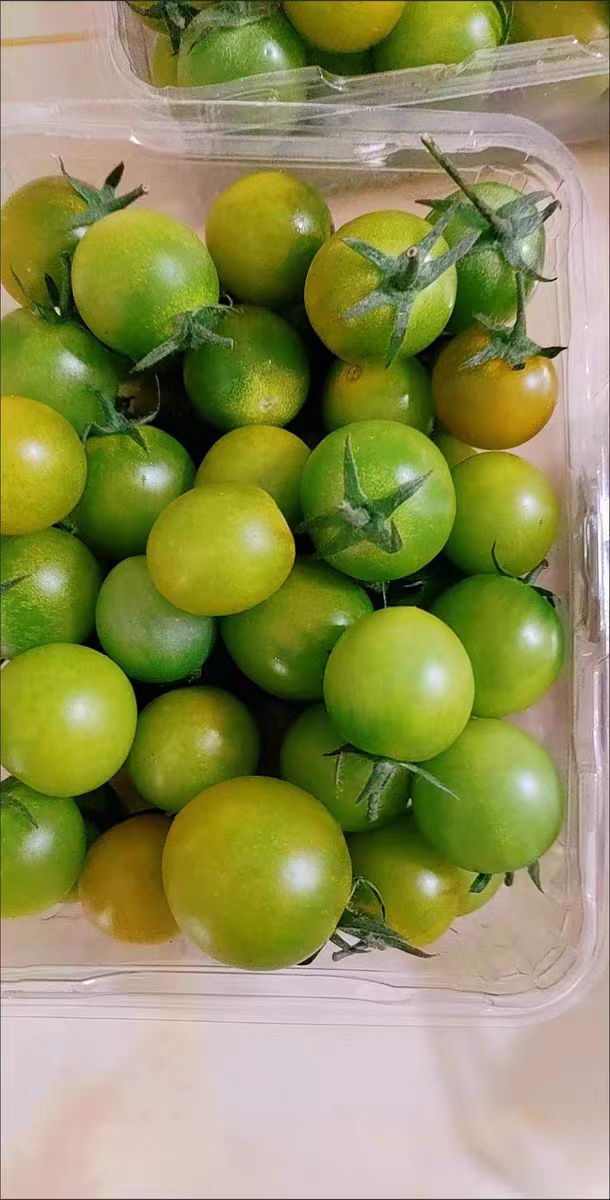Many friends who enjoy growing potted tomatoes at home may encounter this problem: the tomato seedlings grow tall and lush, but they do not flower or bear fruit, or they flower but keep dropping flowers, and the small fruits that barely set also fall off. Don't worry—there are usually several main reasons behind these phenomena.
First, insufficient light is a common factor. Tomatoes particularly love sunlight and require 6-8 hours of direct sunlight daily. Many people like to place potted tomatoes on indoor windowsills or balcony corners, where the light is insufficient. In response, the tomatoes will desperately grow taller to "reach" the sunlight, resulting in thin and elongated stems, yellowing and thinning leaves, and delayed flowering. At this point, nutrients are all used for stem and leaf growth, leaving no energy for flowering and fruiting.
Second, improper water and fertilizer management can also cause this issue. Many people think that applying more fertilizer can make tomatoes grow faster, especially favoring nitrogen-rich fertilizers such as urea or unripe chicken manure. However, excessive nitrogen can cause tomatoes to "grow wildly," with vigorous stem and leaf growth, which hinders the absorption of phosphorus, potassium, boron, and other elements needed for flower bud differentiation, making it difficult to bloom. Frequent watering is also problematic: if the potting soil remains wet, the roots will lack oxygen, and excessive water supply will cause tomatoes to only grow stems and leaves. This is especially true during the seedling stage, where overwatering increases the risk of excessive vegetative growth.
Another important factor is poor root development. If the flower pot is too small (with a diameter of less than 30 cm) or the potting soil is compacted, the roots cannot spread out, and their absorption capacity will deteriorate. In this case, the plant will prioritize stem growth for survival over fruit development. Additionally, tomatoes that have not been repotted for many years may have old roots coiled up in the pot, leading to the same problem.
Tomatoes have strong branching abilities. If not pruned in a timely manner, with 丛生 (clustering) lateral branches and no pinching of the main stem when it becomes too tall, the foliage will become too dense, blocking sunlight from each other and poor ventilation. As a result, nutrients are consumed by useless branches and leaves, leaving insufficient supply for flowers and fruits.
Although tomatoes can self-pollinate, they still need wind, insects, or vibration to help pollen fall onto the stigma. In an enclosed indoor balcony without natural wind or insect assistance, and without artificial pollination, they are prone to "flowering without setting fruit." Moreover, if the air humidity is too high (exceeding 85%) or too low (below 40%), it will affect the activity of pollen and the adhesiveness of the stigma, making it difficult for fruits to set.
Inappropriate temperatures also greatly affect fruit setting in tomatoes. During the flowering period, if the daytime temperature remains above 30°C and the nighttime temperature exceeds 20°C, the pollen will lose its viability, and the ovary will not develop well, leading to (large-scale) flower drop. Conversely, when exposed to low temperatures below 15°C, especially nighttime temperatures below 10°C, flower bud differentiation will be disrupted, the style will become short and bent, and the pollen tube cannot elongate normally, making fertilization and fruiting impossible.
Once the causes are identified, there are clear directions for solutions. First, provide sufficient light for the tomatoes, placing them on a south-facing balcony or windowsill as much as possible to ensure more than 6 hours of direct sunlight daily. Manage water and fertilizer reasonably: do not water too frequently during the seedling stage—water only when the soil 2 cm below the surface is dry, maintaining a "dry-wet cycle." Avoid single nitrogen fertilizer application; apply sufficient decomposed sheep manure and bone meal as a base fertilizer during planting, and use high phosphorus-potassium compound fertilizer (such as a 10-30-20 formula) during the growing period, spraying once every 10 days.
Choose a flower pot with a diameter of more than 30 cm, and mix the potting soil with (leaf mold), garden soil, and coarse sand in a 3:2:1 ratio to ensure looseness and air permeability. When the seedlings grow to 30 cm, pinch the top, leave 2-3 strong lateral branches, and regularly remove old and diseased leaves to improve plant ventilation and light transmission.
In fact, the main reason these problems occur in potted tomatoes is that their growth environment does not meet their needs. As long as we observe more, adjust management methods according to different growth stages of tomatoes, ensure suitable light, water, and fertilizer, and do a good job in pollination and pest control, the tomatoes grown at home will surely be laden with fruits.
Why do potted tomatoes grow tall but not bear fruit?

Share with
Tagged in :




Leave a Reply